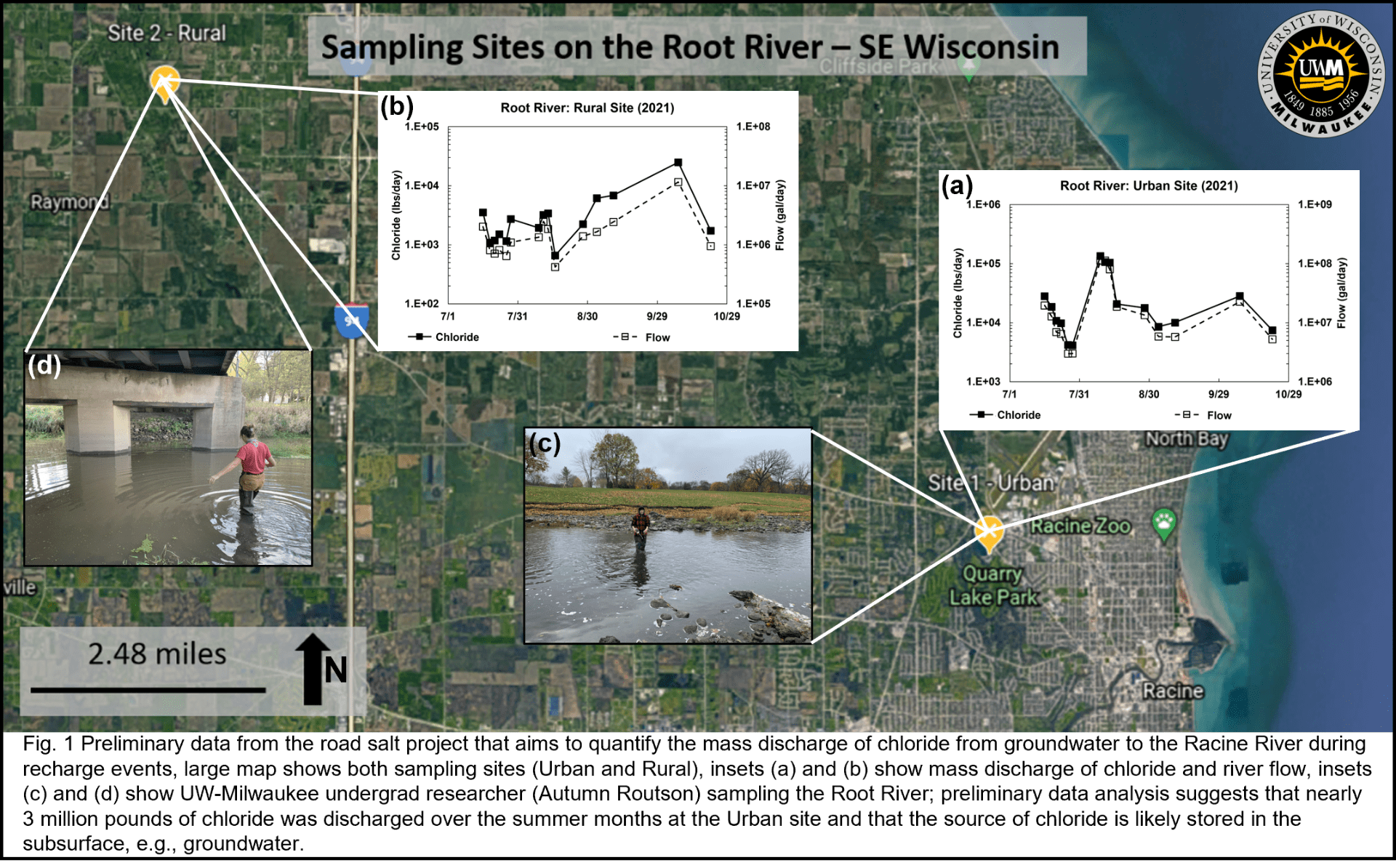
This research will address the problem of groundwater that is contaminated with road salt. Chloride is the predominant dissolved-phase constituent of road salt and is highly mobile in runoff water, surface water, and groundwater. The concentrations of chloride in surface waters of Southeastern Wisconsin have been measured in exceedance of both chronic (395 mg/L) and acute (757 mg/L) toxicity levels for several decades during periods of road salt application and precipitation/snowmelt-driven runoff. Interestingly, higher chloride levels have also been observed during summer months along sections of the Root River when road salt applications are negligible and precipitation/snowmelt-driven runoff is relatively low. It has been hypothesized that the mass discharge of residual chloride via groundwater flow (baseflow) to the Root River can explain the high levels of chloride during summer, but this hypothesis has yet to be tested. The goal of this research is to quantify the residual groundwater component of the mass discharge of chloride to the Root River before, during, and after the summer months.
Preliminary results from this project are shown on the following poster by Leah Dechant: Investigating the potential sources and pathways of chloride to surface waters

Leah Dechant awarded best poster at 46th annual meeting of the Wisconsin Section of the American Water Resources Association in 2023